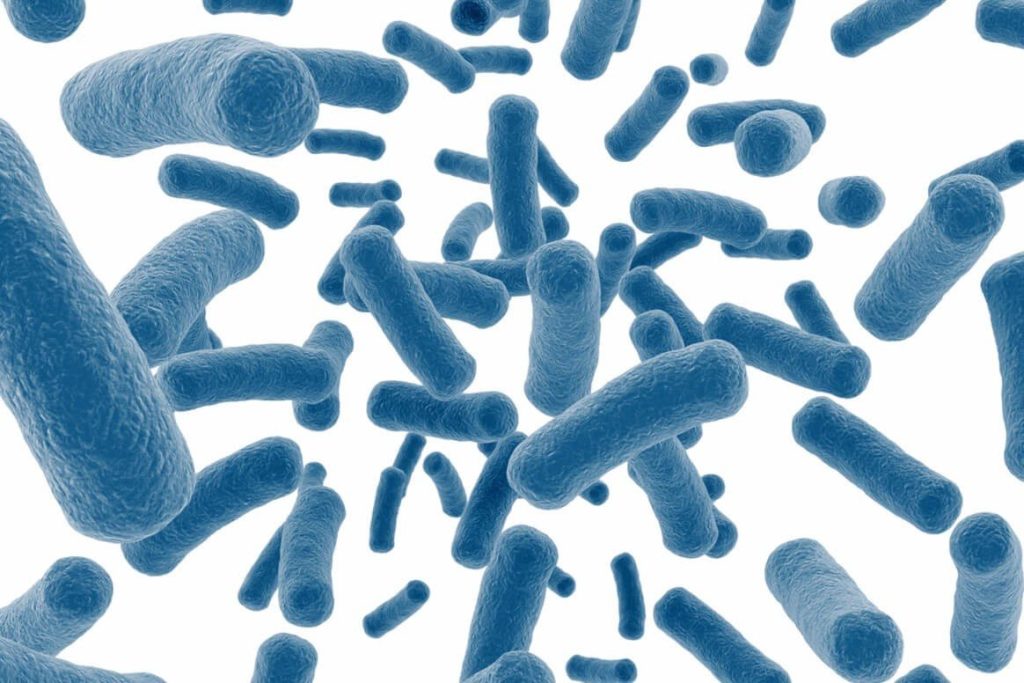What
What is the microbiome?
Microbiome is the totality of characteristic microorganisms inhabiting the human body and mucosal surfaces – oral cavity, respiratory tract, esophagus, intestine, skin and genitals. The total number of bacterial cells inhabiting our body is approximately 100 trillion, while human cells are only about 10 trillion. It has been shown that while the human genome encodes 30,000 proteins, the microbial genome is 100 times larger. In this sense, at the genetic level, we are 99% “bacterial”.
The term “microbiome” was introduced by Nobel Laureate Joshua Lederberg as the complex of genes and interactions of ecological “communities” of commensal (mutually beneficial microorganisms, but can also be pathogenic when their quantity increases), symbiotic (mutually beneficial) and pathogenic microorganisms that inhabit the human body. The scientist presents the idea that the general genome of microorganisms should be considered as a complement to the human genome, thus creating a “collective” genome that turns the human into a superorganism (holobiont) or, more precisely, into a separate full-fledged “ecosystem”.
It has been proven that the natural microbiome provides indispensable products for the biological development of the organism, such as enzymes needed to digest polysaccharides, amino acids, fatty acids, etc., proteins to regulate the immune system and synthesize vitamins such as K and B, for example.
The largest and best studied is the intestinal microbiome. Nearly 80% of the body’s immune reactions take place there. More and more information is accumulating regarding the composition and importance of commensal bacteria in the oral cavity (oral microbiome),
skin (skin microbiome), respiratory system (broncho-pulmonary microbiome) and urogenital tract.
How
What makes the skin microbiome different?
Human skin is a rather unfavorable environment (poor in nutrients, with relatively high acidity, dry, with continuous shedding of superficial skin cells), but nevertheless it is inhabited by about one billion bacteria per square centimeter. The skin microbiome is characterized by the same four predominant types of microorganisms as elsewhere on the body – Actinobacteria, Firmicutes, Proteobacteria and Bacteroidetes – but their ratio differs significantly, with Actinobacteria predominating at 52%.
The skin microbiome is characterized by great diversity. On the skin of the elbows, for example, Betaproteobacteria dominate, on the back – Propionobacteria, and on the nose – Corynebacteria. These differences are due to skin temperature, humidity, distribution of glands, manifestations of environmental factors, etc. Some areas of the skin, such as the groin and the folds between the toes, have a higher temperature and humidity. These regions are inhabited by microorganisms that prefer moist conditions. Other areas characterized by a high density of sebaceous glands, including the face, chest and back, are inhabited by lipophilic microorganisms (preferring fatty acids as food). The balance of “normal” living skin flora (Propionibacterium acnes, Staphylococcus epidermidis, Staphylococcus aureus, Corynebacterium diphtheria, Corynebacterium jeikeium and Pseudomonas aeruginosa) is unique and different for each person.
In addition to being a physical barrier, the skin is also an immunological barrier. Skin’s immune response is important for protection against infection and wound healing. Keratinocytes (epidermal cells) recognize microbial antigens through receptors that identify their specific parts, ie. can distinguish between skin-specific bacteria and pathogenic microorganisms. Although exposed to different influences, the skin can distinguish pathogenic from non-pathogenic microorganisms, and develop tolerance to commensals (mutually beneficial, depending on their quantity). Much evidence has been accumulated in favor of the thesis that the skin microbiome can suppress (inhibit) the development of pathogenic flora. Staph. epidermidis, for example, selectively inhibits Staph. aureus and E. coli. Thus, the immune response against pathogens is enhanced, but the inflammatory response against beneficial bacteria is suppressed.
Dysbiosis is a condition in which the balance of the microbiome is shifted in an unfavorable direction or the total amount of microorganisms is significantly reduced.
Atopic dermatitis (AD) is characterized by pronounced dysbiosis. Even decades ago, the effect of
Staph. aureus was proven for exacerbation of the disease, as well as the role of the biofilms formed by it. In additio
n, Staph. aureus reduces the amount of other commensals. In atopic dermatitis, the genetic defects of the skin and the immune response lead to an increase in the damage to the skin’s barrier function. This increases the sensitivity of the skin to allergens. It becomes dry and itching leads to greater physical stress on the already damaged skin barrier, which in turn leads to an increase in the
pH of the skin, damages the adhesion of keratinocytes (their ability to stick to the epidermis), and increases inflammation. Exacerbation of AD is characterized by an abundance of
S. aureus against a background of reduced overall microbial diversity. This in turn increases the severity of AD by secreting various virulence factors that damage the integrity of the skin and increase inflammation.
Although maintaining a balance in the skin microbiome is a complex multifactorial process, a healthy organism usually copes with environmental stressors unnoticed. In cases where disease, hormonal or nutritional imbalances are present, however, the skin’s natural barrier functions are impaired.
What
What is the difference between prebiotics and probiotics?
Essentially, prebiotics are “food” for our good (commensal and synbiotic) bacterial friendly microorganisms, while probiotics are actually “live” bacteria. Both groups are clinically proven to soothe irritated skin while supporting microbiome health to prevent colonization of pathogenic bacteria and ward off infection. This is especially important for people with dry or cracked skin where the skin’s acid mantle and lipid barriers are compromised.
Prebiotics are an intriguing group of ingredients because of the important role they can play in addressing a variety of skin concerns. Research on the health benefits of consuming prebiotics due to their positive effect on probiotics is well established; now emerging research is shedding interesting light on how prebiotics may work when applied to the skin.
How
How are skin prebiotics applied on the skin?
The skin microbiome along with the gut microbiome is vital to our existence. In the gut, microorganisms form an important part of our immune system and also play a vital role in digestion. Our skin is home to trillions of bacteria (both beneficial and pathogenic), forming our first line of defense against disease, inflammation and infection. So, of course, to keep skin healthy and minimize infections, acne, redness, atopic dermatitis, etc., keeping our precious skin microbes healthy is vital. Here comes the role of prebiotics. They are nutrients (usually carbohydrates) that are metabolized mostly or entirely by the skin microbiome without feeding harmful microorganisms and help maintain the immune response against them.
Foods containing prebiotics include garlic, onions, oats, barley, wheat bran, asparagus, bananas and flaxseeds, as well as a plant fiber known as inulin, which is found in chicory root. Extracts from these plants can be incorporated into a variety of skin care products so that we can apply prebiotics to improve our skin’s microbiome. Even more beneficial to the skin when applied topically are prebiotic plant sugars such as xylitol, rhamnose and a large group of compounds known as fructo-oligosaccharides, which are powerful sources of prebiotics (also natural humectants, i.e. retain moisture in the skin).
Should
Should we use them and what skin types are they suitable for?
Prebiotics have a positive effect on all skin types, from oily to dry, but are especially beneficial for people with sensitive skin, prone to acne or eczema, dry or cracked skin, or people who have used topical antibiotics or corticosteroids.
Unfortunately, there are many factors that affect or damage our precious microbiome, leaving the skin “open” to infection by pathogenic bacteria. These include pollution, excessive hygiene that disrupts the skin’s acid mantle, preservatives, cold, sunlight, antibiotics, and products that alter the skin’s
pH balance, such as AHAs and other chemical exfoliants. Many cosmetic and personal care products contain ingredients that can alter or destroy the microflora of the skin if used incorrectly. This is why it is important to use products composed of naturally produced ingredients that are designed to have minimal impact on the skin’s natural microbial balance. In combination with an appropriate clinically proven prebiotic complex, these products stimulate healing processes and strengthen the skin’s barrier functions.
Who
This is an editorial prepared especially for you by L‘ali.
All rights reserved!


